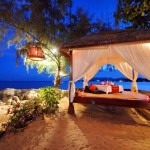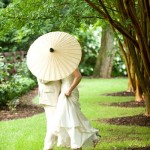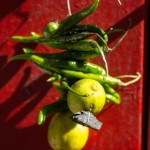India is a land of many cultures, many thousand cultures would be more appropriate; and a million sub-cultures. Each has its own dialect, traditions, clothes, food, rituals, and of course its own distinct style of weddings. There’s so much happening during Indian weddings that it becomes the single event from where you can imbibe the maximum culture and way of life of a people. Today I choose to write about a Kashmiri wedding. You won’t find this on any holiday package to Kashmir; but if you can manage to get yourself invited to one these, there’s nothing like it.
We all know that in India, a wedding is more than the union of two individuals; it’s the union of two families. There is absolutely no part of the wedding that’s even remotely private. And it all starts with the stars. The horoscopes need to match. Once that is out of the way, the stress shifts to checking the compatibility between the families of the bride and the groom; backgrounds, reputation and status.
Vaana, the Formal Engagement
This has to take place in front of an idol, usually happens in a temple. There is an exchange of flowers between the two families that symbolizes the beginning of the alliance. The girl’s family lays out a traditional meal. A special rice pudding called var is prepared separately in the houses of the bride and the groom, by the respective eldest aunts. This is distributed among the neighbors and relatives. The girl’s family sends cash, fruits, dry fruits and a pot containing nabad (misri, sugar lumps) to the boy’s house.
These days, the ceremony takes place at one the houses with a simple exchange of rings.
Livun, the House Cleansing
Before the wedding, an auspicious day is chosen for the traditional cleansing of the house. Usually, Livun does not take place on the same day in both houses. All married women in the family are expected to be present. Var is once agaon prepared and distributed.
This is also the day when the waza (family cook) arrives and puts together a mud-and-brick oven called wuri in the backyard of the house. This is where the traditional meals will be cooked for the wedding ceremonies.
Wanvun, Song & Dance
Every evening after livun, following up to the marriage ceremony, a sangeet (music) session is held in both the bride’s and the groom’s houses where the participants, include neighbours and relatives, indulge in song, dance and merrymaking. Noon chai is the drink of choice on these evenings.
Maenziraat, Mehendi
This ceremony that takes place about a week before the wedding. The ceremony begins with krool khanun, the decoration the main entrances of both the houses. Krool khanun is followed by an elaborate bathing of the bride. After bath, the oldest aunt of the bride decorates her hands and feet with henna or maenz. Maenz is also distributed among the relatives and neighbours. Women are invited in the ceremony and are served Kashmiri meal prepared by the waza. Dinner is followed by more Wanvun. In the groom’s house, a little mehendi is applied on his hands as it is a symbol of auspiciousness.
Yagneopavit, Thread Ceremony
If the Janayu or thread ceremony has not been performed earlier for the groom, then it is conducted a few days before the wedding. If the ceremony is conducted post-adolescence he wears a thread of 6 strands as opposed to 3 worn if the ceremony was performed in his younger days.
Divagone, the Actual Ceremony
The divagone is a ceremony that marks the transition of the bride and the groom from brahmacharya ashram to grihastha ashram. The purohit conducts the ceremony in front of a sacred fire. The ornaments and utensils that will be given to the bride by her family are also placed in front of the fire. An essential part of the rituals is the kanishran. This involves bathing the boy /girl with a mixture of water, rice, milk and curd. They change into a new set of traditional attire following the kanishran. The parents of the bride give her jewellery, clothes, household items, etc. An essential item of the jewellery is the dejaharu, an ear ornament that has gold tassels strung on a sacred thread that passes through the middle ear cartilage. These holes are pierced in the ears of all Kashmiri girls when they are 2 or 3 years of age. The significance of wearing the dejaharu is that the bride is now ready for matrimony.
The boy is given A pheran with tight, long sleeves, having a triangular neckline calledtaninaal, the upper lapel of which is tied at the left shoulder with a piping called dov and a waistband made of ruffle / pashmina with the ends embroidered with a golden thread and zarbaf called louing. They are both ready to take the plunge now.
Kashmir tourism has a lot more to offer than its perfect pictures. Look out for the authentic Kashmiri experiences.
Latest posts by Shivangi Rajendran (see all)
- Top 6 Places to See in Pondicherry - October 29, 2021
- Top 6 Places to See in Coorg - October 25, 2021
- Top 10 Activities to do in Pondicherry - October 24, 2021






















